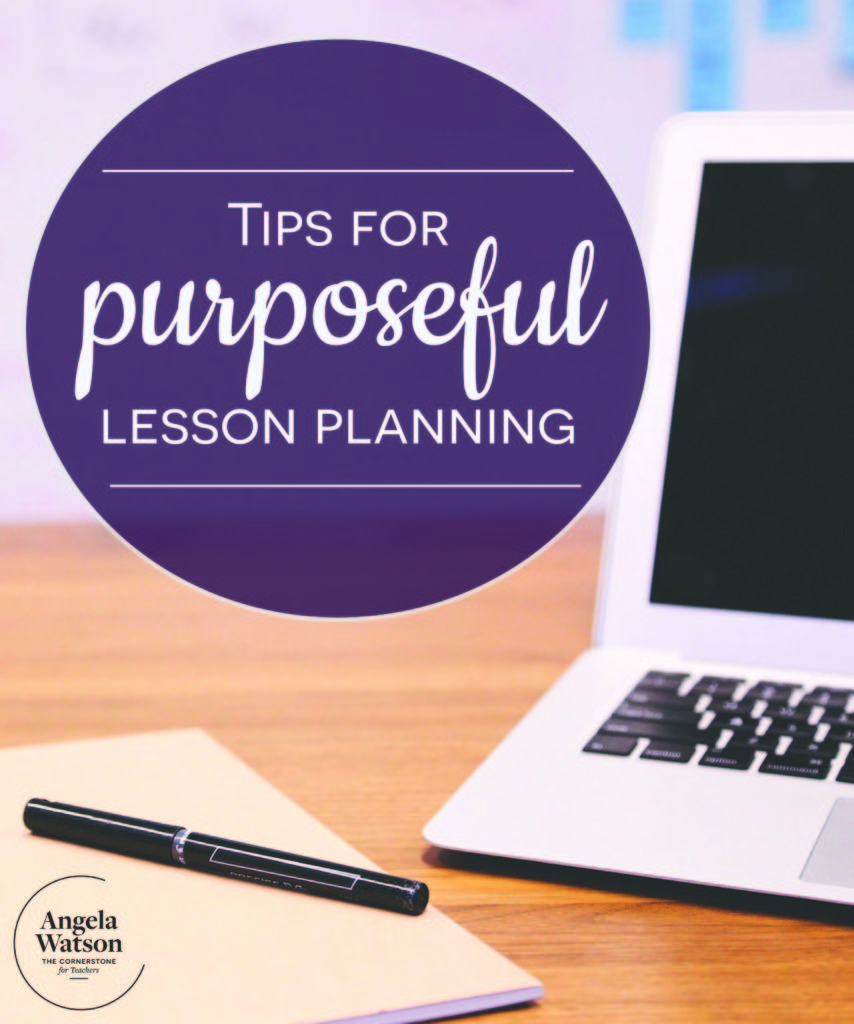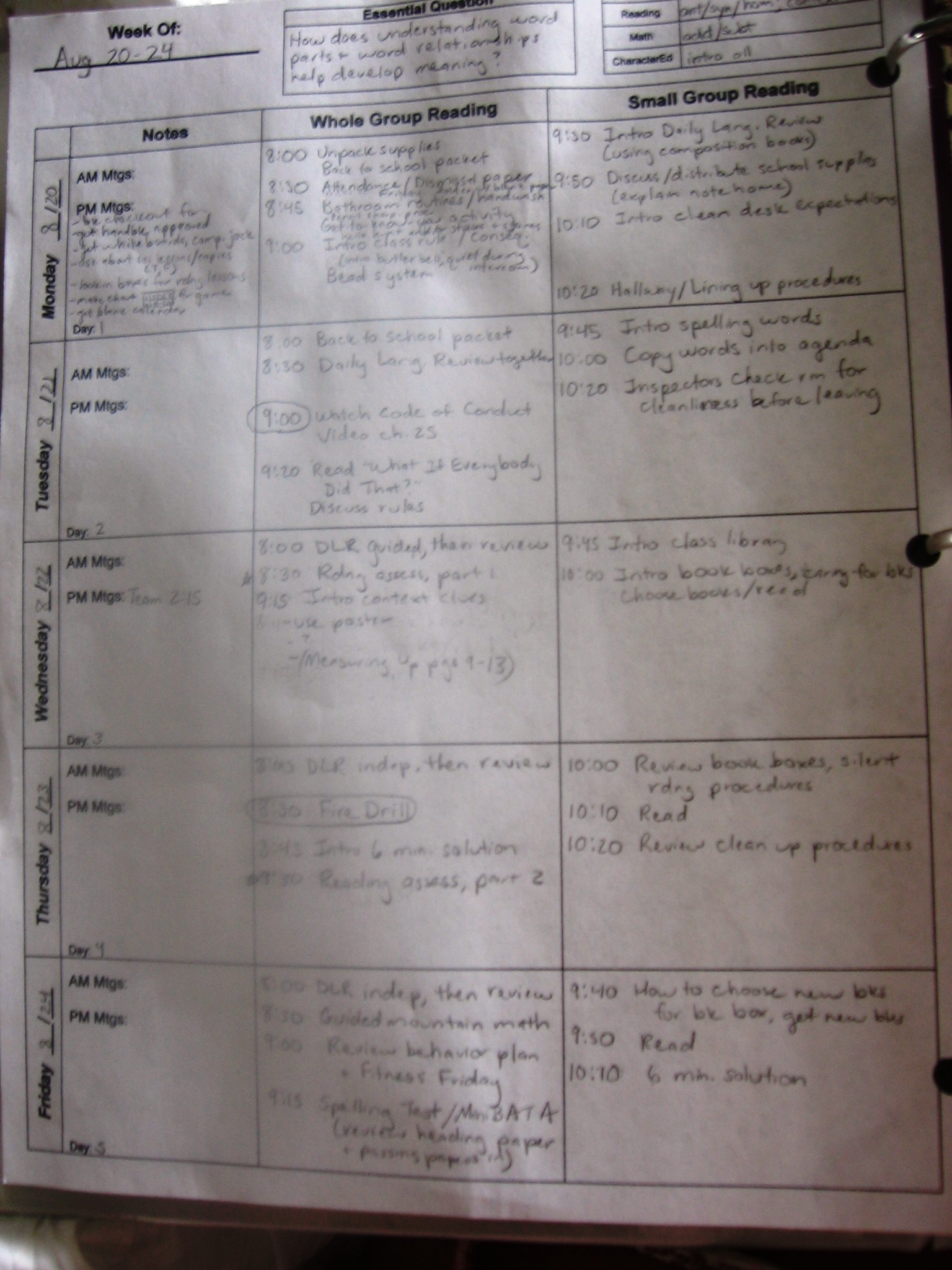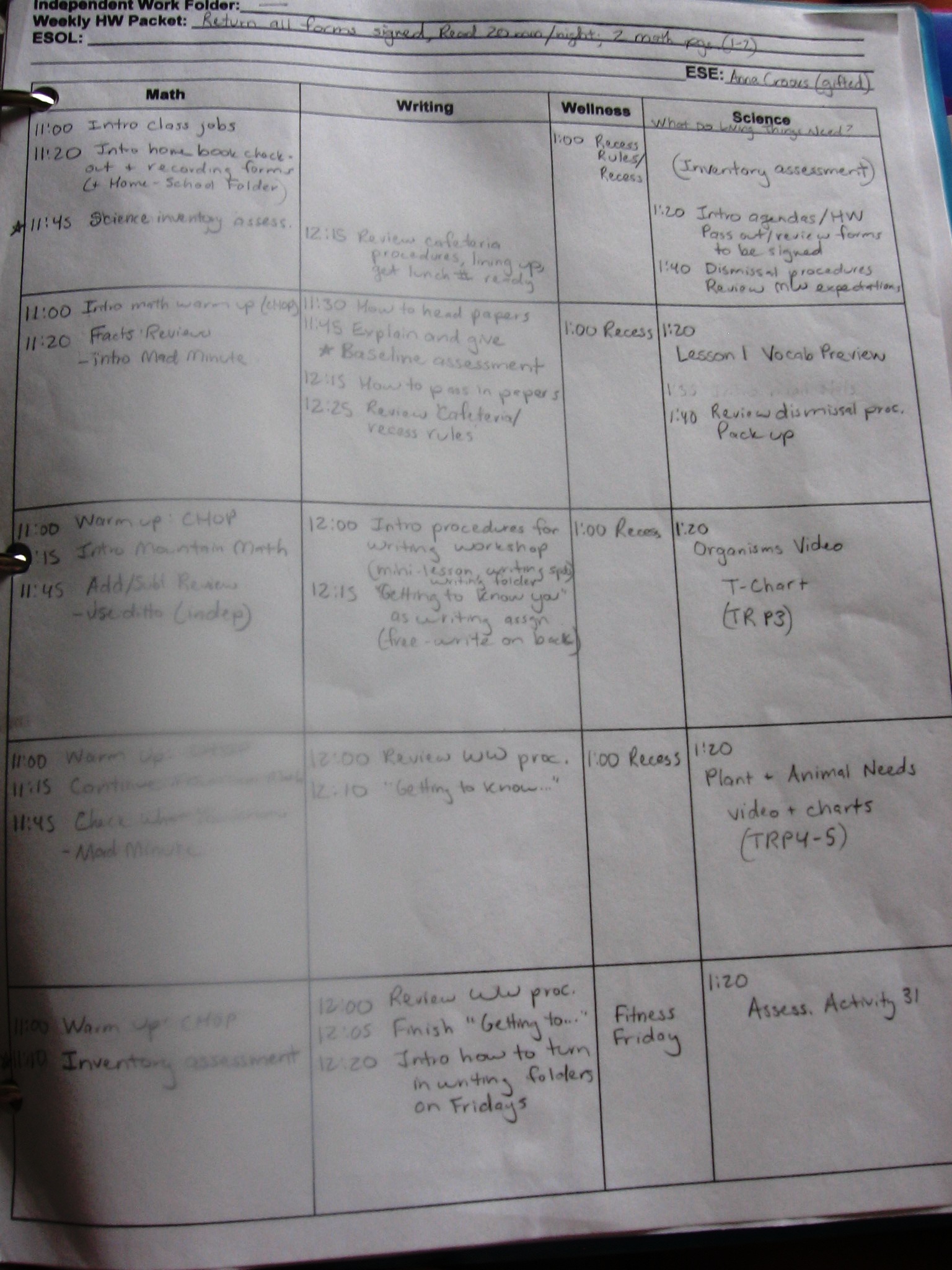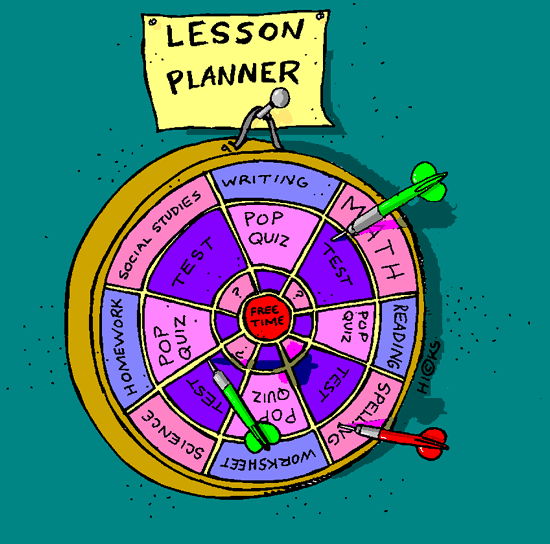If you want to create a more unified, thematic approach to our curriculum that makes learning more meaningful for students, read on! This page (which is adapted from The Cornerstone book)shares ways to set goals, collect and organize resources, and create long- and short-term lesson plans that not only align with what your school district requires, but with what YOU know is best practice for your students.

Is this your idea of how to plan lessons?
All of us can think of a time in which we didn’t understand what we were supposed to be teaching or how, and the impact our unpreparedness had on the flow and effectiveness of the lesson. There are no routines or procedures that can make up for a lack of clearly defined activities that achieve a common purpose. Why plan procedure practice if there is no ultimate goal for student learning? How can we meticulously plan our routines and daily schedule yet neglect to have a vision for what students will learn and achieve throughout the year?
Lesson planning is a very individual process that will vary according to your needs and preferences, the structure of your class, and mandates by your administration. I have taught in schools that left me completely on my own and gave almost total freedom as to which skills I taught and when. Other schools provided a pacing guide that told me exactly what to teach at every moment of the day with such precision that I could have told you in August what I would be doing at 9:45 a.m. on April 19th. Your situation could be at either extreme or someplace in the middle, which makes it difficult for me to give general advice about lesson planning. Instead, I’ll try to provide guidelines to help you streamline the system you’re supposed to use and reflect on your practice in a way that isn’t overwhelming.
If you want to create a more unified, thematic approach to your curriculum that makes learning more meaningful for students, read on for ways to set goals, collect and organize resources, and create long- and short-term lesson plans that not only align with what your school district requires, but with what YOU know is best practice for your students.
Using a daily plan book
When I first started teaching, I used standard lesson plan books with one square for each subject. I wrote out every detail of what I planned to do to make sure I didn’t forget anything. Over time, I felt like I was rewriting the same things too often, so I developed my own weekly lesson plan format in a word processing document (which can be downloaded on my website). Now I print it out and photocopy the pages back to back.
When I sit down to plan for the upcoming months, I copy the skill from my pacing guides into each lesson plan block and underline it as a title for the lesson, such as “Equivalent Fractions” or “The Inner Planets.” When all the skills are written in for the time period I’m planning for, I go back and write activities related to the skills, one subject area at a time. Seeing the order in which skills will be taught for each day of the month helps me keep the big picture in mind as I plan specific lessons. I use my lesson resources to help me fill in the activities, pulling out the related drawer or magazine file boxes to see what materials and worksheets I have and setting up a pile of things to get photocopied.
Advice for daily/weekly lesson planning


Check your district requirements.
Some districts and administrators want teachers to write lesson objectives, homework assignments, how instruction will be differentiated, etc., in their plan books. Find out what is being asked of you and if it seems excessive, check with your union representative to determine your contractual obligations. I once worked for a principal that asked teachers to document far more information than would ever fit in our planning pages; in another county, I heard of principals who were requiring typed lesson plans to be posted online. In both situations, our contracts specified that we could not legally be required to do those things.
Consider typing your reading group plans if you follow a similar format each day.
I did this for language arts in one school because our 120-minute block was very regimented. I enjoyed the consistency of the schedule and found that printing out an outline of the block and then handwriting the specifics for the week saved me a lot of time and helped me feel more prepared.
Underline the materials needed for each lesson.
At the beginning of the day (or the afternoon before), you can quickly glance over the day’s lessons and see what things you need to gather or prepare.
Design a rough outline of your plans for an entire month or unit, then fill in the details as you go.
There is something to be said for student-centered curriculum and basing future instruction on how well children are mastering the current skills. However, planning day-by-day or week-by-week does not enable you to focus on the big picture of what you want your kids to ultimately learn, unless you are following a pacing guide. You may not want to plan all of the activities for next month quite yet, but write down the skills or concepts you want to cover for each day, leaving yourself several days for review and catch-up activities. The week before you teach, you can choose the exact lessons and materials to use and fill them in your plan book.
Have a regular, uninterrupted time for lesson planning.
When I switched from third to second grade, I used to take all my manuals home every other weekend. (Of course, you may now be able to access most of your teaching guides online so it won’t be necessary to drag everything around!) I would spend about two hours on Sunday afternoons planning. To me, it was worth the time investment because I felt so much more prepared at school. In other teaching situations, I knew the curriculum so well that I really didn’t have to plan at home, although I did occasionally. The newer you are to the teaching profession/your grade level/your curriculum, the more important it will be to set apart time to really concentrate and create plans you are excited to teach. The longer you’ve been teaching, the easier it will be for you to work more spontaneously. I often write the skill or objective I want to teach and that’s it: then, the morning of the lesson, I’ll come up with a way to teach it that suits my mood, the kids’ moods, and the day’s schedule.
Use sticky notes to reflect on what did and didn’t work for next year’s reference.
I have one sticky for the week that I place on the bottom right hand corner of the page and write notes to myself for next year (“Measuring took longer than I thought—allow about 20 minutes” or “Kids loved main idea posters—give them time to explain with partners”). If your school collects lesson plans at the end of the year, you may want to write your notes on a separate sheet of paper, and then photocopy the notes and the lesson plan pages in June.

Angela Watson
Founder and Writer
Discussion
Leave a Reply
OR

Join our
community
of educators
If you are a teacher who is interested in contributing to the Truth for Teachers website, please click here for more information.

















Good Information